What is Social Media Branding?
Social media branding helps a company or a brand in building and maintaining a clear company image across various social media sites. The audience easily understands and enjoys what you share, if you use the same look, feel, and message. A strong social media brand also helps your business to stand out online and makes it easier for people to recognize. This helps people to connect with you easily.
Good social media branding involves more than just sharing regularly. It requires a structured approach with well-thought-out content ideas, meaningful exchanges, and clear brand guidelines. You need to build a strong brand and show your expertise. This will help businesses to gain trust and attract loyal customers. In this blog, we will learn how to do social media branding and will also look at the top brands with the best social media branding.
Advantages of a Strong Social Media Brand Presence
The success of your company is influenced by a good social media brand presence. Below are some advantages:
- People will be aware of your brand and will be quick to recognise your business and link it with your goods or services if you have a strong brand identity.
- You can earn your audience’s trust and connect with them through posting a high engaging content. Constantly responding to your user’s queries and replying to their comments is a way of keeping them engaged.
- Branding that is consistent encourages more likes, shares, and comments, which ultimately results in an increase in your reach.
- Trustworthy businesses inspire confidence, which leads to an increase in the number of followers who ultimately become customers.
- It is possible to differentiate your firm from its competitors by establishing a unique brand identity, which will in turn attract and retain customers.
Let’s explore how to do social media branding step by step!
Step 1: Define Your Brand Identity
Define Your Brand Mission and Values
Your brand’s mission and values are the basis of your social media strategy. They define what your business stands for and guide how you communicate with your audience. A clear mission statement helps the potential customers understand your purpose, while core values ensure consistency in messaging and decision-making. This foundation is also essential for ethical branding, where brands align their values, communication, and actions to build long-term trust.
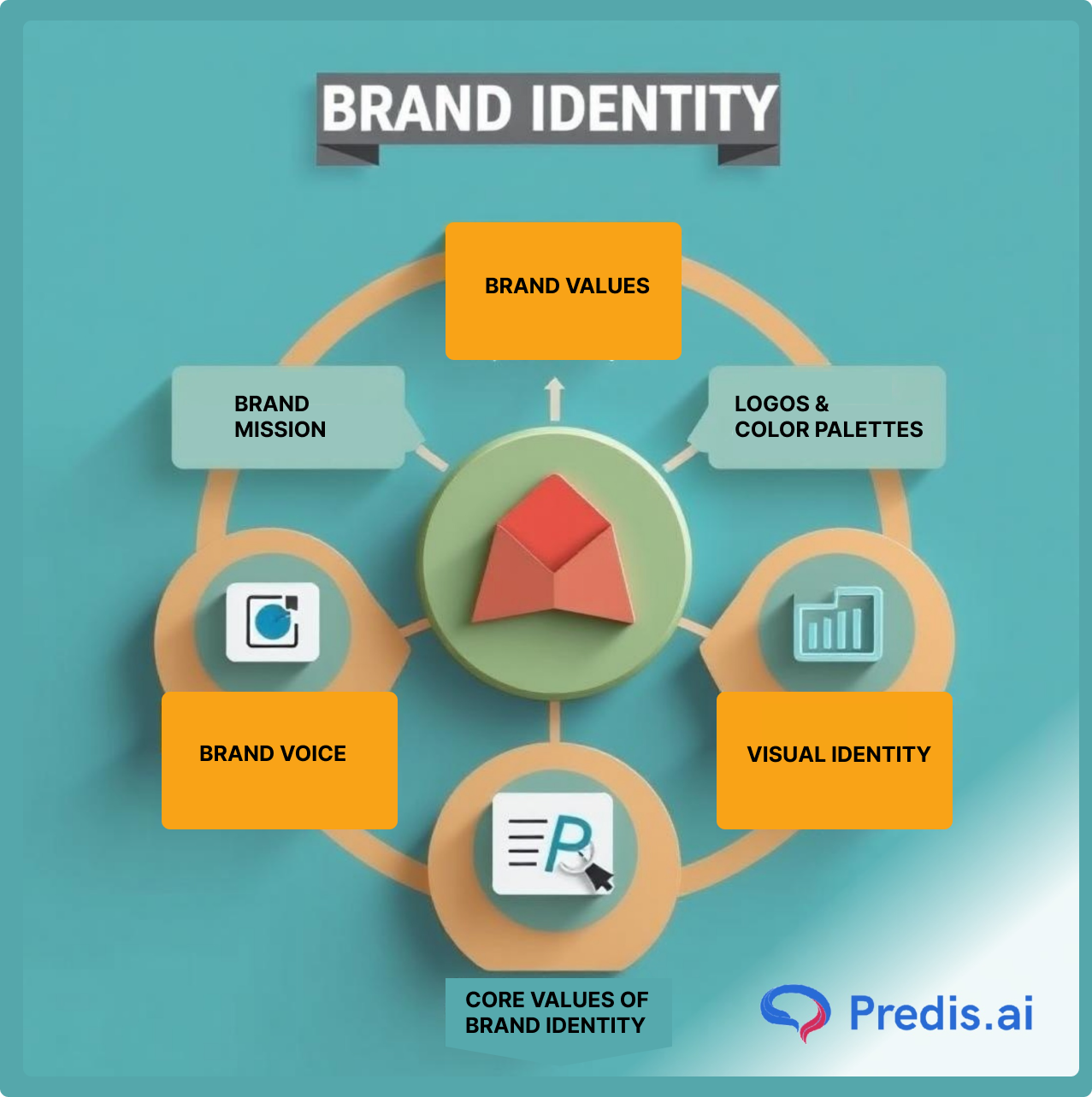
In order to build a powerful vision and a branding strategy that is motivated by values, you need to follow the below:
- Identify your brand’s unique selling proposition (USP). Also, identify how it benefits your audiences.
- Align your brand’s mission with the interests and values of your target customers.
- You can reflect all of these aspects through your social media bios, captions, and content themes.
Establish a Consistent Visual Identity
Your brand’s visual identity is important in making your content instantly recognizable. A consistent and professional appearance across all social media channels helps to make your brand credible and strengthens your brand’s message.
Below are the important components for a strong visual identity:
- Logo and Color Palette: Use the same logo and colors across all platforms to create a unique brand identity and for easy recognition. Make sure to create a logo that aligns with your brand values and visual style
- Typography and Fonts: Choose readable and aesthetically appealing fonts that match your brand personality.
- Images and Graphics: You need to follow a particular style, theme, or filter to maintain visual consistency.
- Templates and Layouts: Develop uniform templates for social media posts, stories, and videos. This helps to keep your social media profiles and content consistent.

Consistent Brand Voice
Your brand voice should reflect your personality and how you communicate with your audience. Your tone should be same across all social media platforms. It can be professional, friendly, humorous, or authoritative, depending upon your brand’s mission and your target audience.
- You can decide the language and tone that resonates with your audience.
- You can create a guide to outline the preferred phrases and style of messaging.
- Whatever tone you choose, use the same in captions, replies etc.
Example: Nike’s Branding Consistency
Nike’s success in social media branding may be much attributed to a consistent visual style and language across all channels.
- The inspirational story, simple design, and vivid color palette they have applied help one to quickly identify their brand.
- Whether it’s a campaign video, an athlete endorsement, or a promotional post, every piece of material Nike generates always reinforces the brand’s objective statement—which is “Just Do It.”
- The creative mix of user-generated material with professional images guarantees authenticity and helps them to remain faithful to their brand.
- As you can see in the below image, Nike’s Instagram speaks for itself.
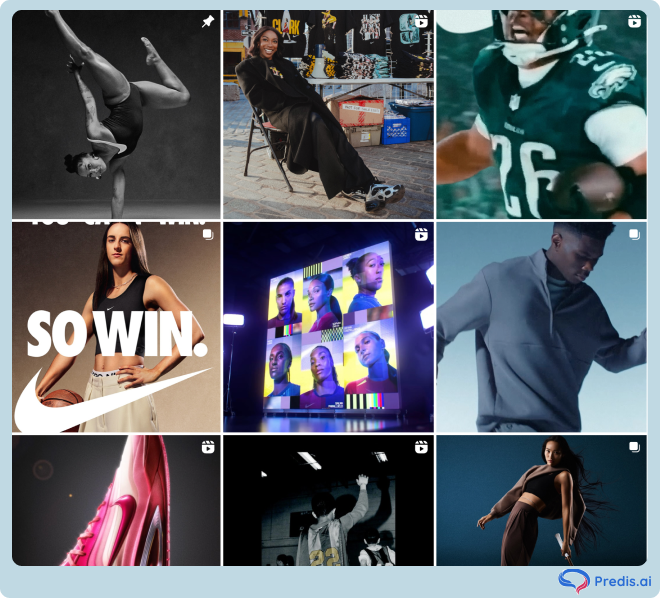
Step 2: Identify Your Target Audience
Successful social media branding depends on your ability to clearly comprehend your target market. One approach to get at this is audience research. Doing extensive study is crucial to make sure your content will appeal to the target audience and satisfy their needs.
Conduct Audience Research
- Using analytics tools as Google Analytics, Facebook Insights, and Instagram Insights can help you to investigate demographics.
- Track trending issues, hashtags, and topics to better grasp people’s interests and worries.
- Engaging consumers may be done rather effectively via polls, questionnaires, and direct contacts with followers.
Create Profiles Of Your Intended Market
A persona of your audience is a complete representation of the perfect customer you aim to draw in. It helps you to create your content strategy so that it appeals to and interacts with the suitable people.
In order to create detailed audience personalities:
- One should first find the most crucial demographic data: age, gender, location, and occupation.
- Learn their tendencies, challenges, and buying behavior.
- One should find out the social media networks they most often use.
Step 3: Choose the Right Social Media Platforms
Not every company will find fit on every social media site. Your effect will be maximum if you choose the appropriate ones depending on audience tastes and content kind.
Choose Relevant Social Media Platforms
- Find out where your intended readers primarily spend their time.
- Think on the kind of material that shines on every platform.
- Research competitors’ tactics to learn what applies in your field of business.
Optimize Social Media Profiles
A well-optimized profile draws the proper audience and increases discoverability. Make sure your brand’s character shows on your social media profiles. Steps to optimize your profiles:
- Choose high quality profile pictures and cover images.
- Create a captivating bio using relevant keywords.
- Link your website and contact information.
Step 4: Develop a Strong Content Strategy
Using a thorough content plan can help you to keep the interest in your brand among your audience. It is advised that you try several kinds of content formats instead of sticking to one format in order to maximize both reach and interactivity.
Diversify Content Types and Formats
- Films, infographics, and visually appealing pictures abound in visual materials.
- Online teaching materials include webinars, how-to guides, and blog articles.
- Among interactive materials are polls, tests, live question and answer sessions, and sweepstakes.
- Users create reviews, feature stories, and consumer endorsements among other things.
Implement a Content Calendar
Use a Content Calendar to your advantage. Keeping a content calendar guarantees consistency and helps you to more effectively schedule your posting dates. Making forward plans for materials helps you to stay relevant and prevent you from passing on significant opportunities.
- Plan the major events and content themes for every month if you want to create a content schedule with effectiveness.
- Scheduling tools as Predis.ai, Buffer, Hootsuite, or Later can help you to automatically post.
- Make sure your content reflects industry trends, holidays, and marketing campaigns as well as business practices.
Step 5: Engage and Build a Community
Community Engagement
Creating an active and involved community raises natural reach and promotes brand loyalty. To increase interaction:
- Respond fast to mentions, texts, and comments.
- Post client stories, reels etc to inspire user-generated content.
- Organize challenges, contests, and interactive events to inspire involvement.
Influencer Partnerships
Working with influencers will help your brand to be more credible and widely visible. To foster effective alliances:
- List people that fit your brand values. Collaborate with influencers whose target audience matches with yours.
- Talk to them via comments and joint projects.
- Create co-branded materials that appreciate both audiences.
- You can also track the performance of your influencer marketing.

Step 6: Track, Analyze, and Optimize
Monitor Key Performance Indicators (KPIs)
Track Key Performance Indicators (KPIs) – Refining your approach depends on measuring results.
- Important KPIs to monitor comprise: DMs, likes, comments, shares.
- Reach and follower growth are important metrics to monitor.
- Website traffic and conversion rates from social media.
Perform Regular Competitor Analysis
Researching your competitors. Doing so might highlight great practices and possibilities. To carry out an analysis:
- See their content approach and degree of interaction. You can research how your competitors are interacting with their audiences on social media. What kind of content is getting the most attention that they are frequently posting.
- Point up weaknesses in their strategy and make use of them.
- Modify effective strategies to improve your branding plan and strategy.
Adapt and Advance Your Approach
As social media is always changing, so should change your branding strategy. You can build a strong social media brand by following these techniques. This will help you to increase your followers, engagement and keep a devoted follower base while growing your brand. To be ahead:
- Track developments in algorithms and new platform capabilities.
- You should experiment with various content styles, formats and engagement strategies.
- Gather audience insights, feedback and then optimize your strategy based on performance records data.
Examples of Successful Social Media Branding
1. Coca-Cola
Coca-Cola’s social media branding is all about happiness, togetherness, and nostalgia. Their campaigns like “Share a Coke” encourage user-generated content, boosting engagement and brand loyalty.
As you can see in the below image, Coca cola’s brand colors are defined and consistent. They use their brand colors across all the social media platforms. This helps the user to easily identify the brand.
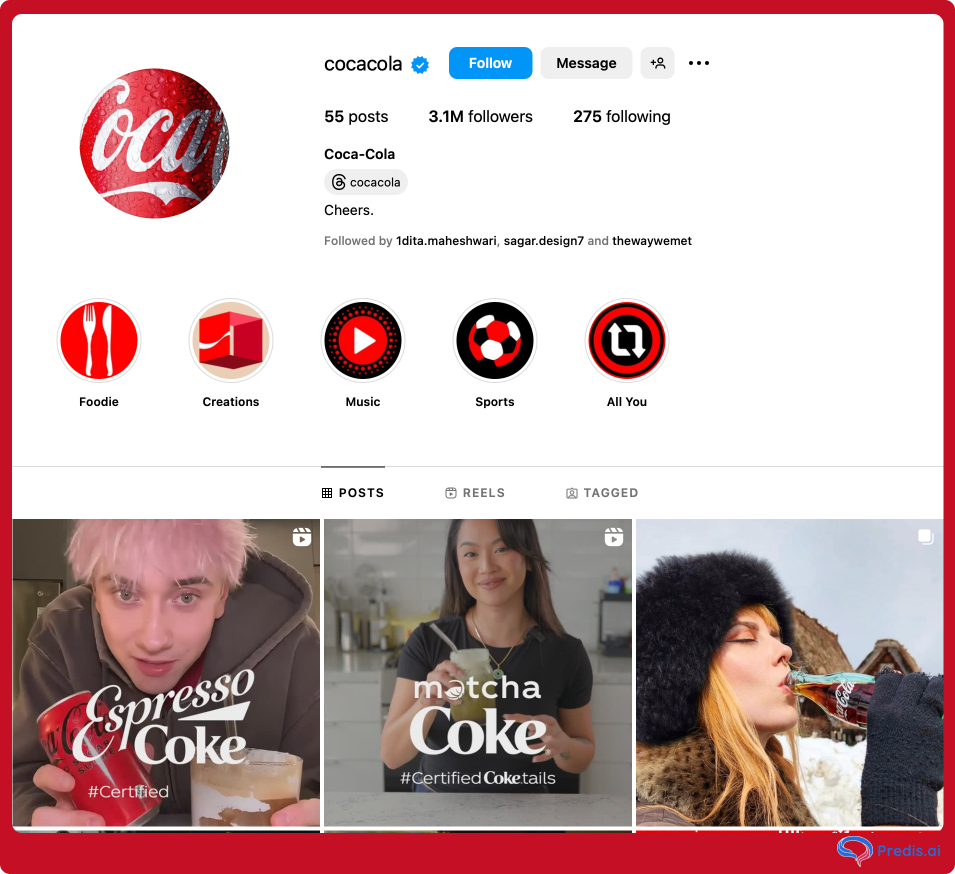
2. Airbnb
Airbnb focuses on storytelling, featuring authentic traveler experiences. Their user-generated content and destination guides make their brand relatable and inspiring. Below is the perfect example of this.
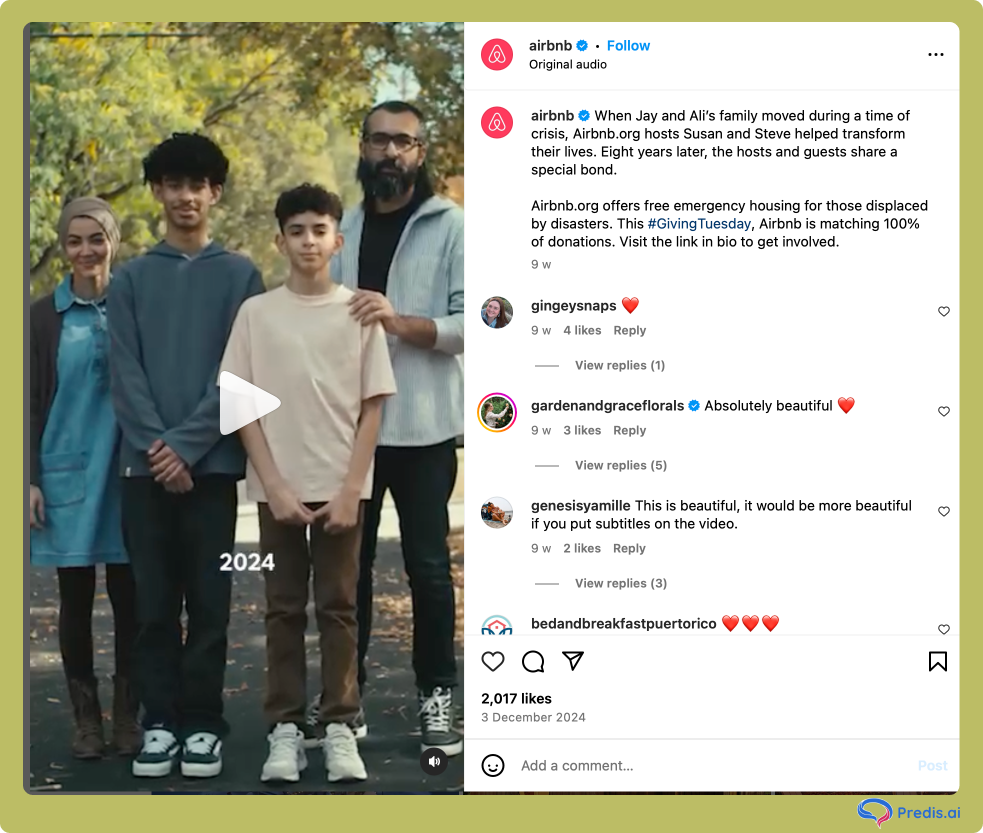
3. Glossier
Glossier has built its brand by engaging directly with its community. Their aesthetic, user-centric approach and influencer collaborations make them stand out in the beauty industry. As you can see in their Pinterest social media handle. Even their tagline reflects that they are engaging directly with the community.
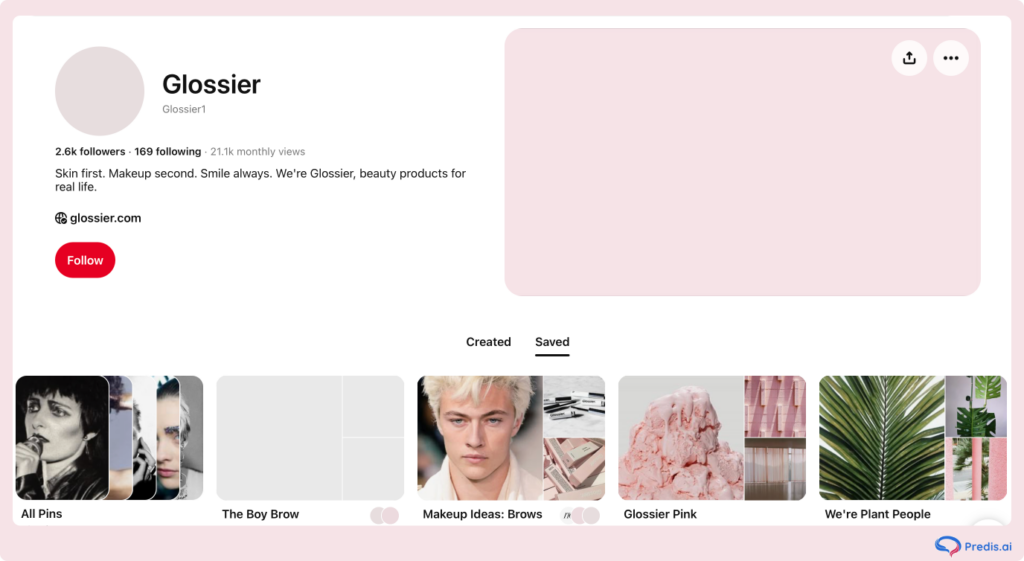
4. Spotify
Spotify’s use of data-driven marketing, such as Spotify Wrapped, creates highly shareable content that enhances brand interaction and virality. They have maintained consistency in their Instagram handle as well, by posting content in a similar format and color palette.
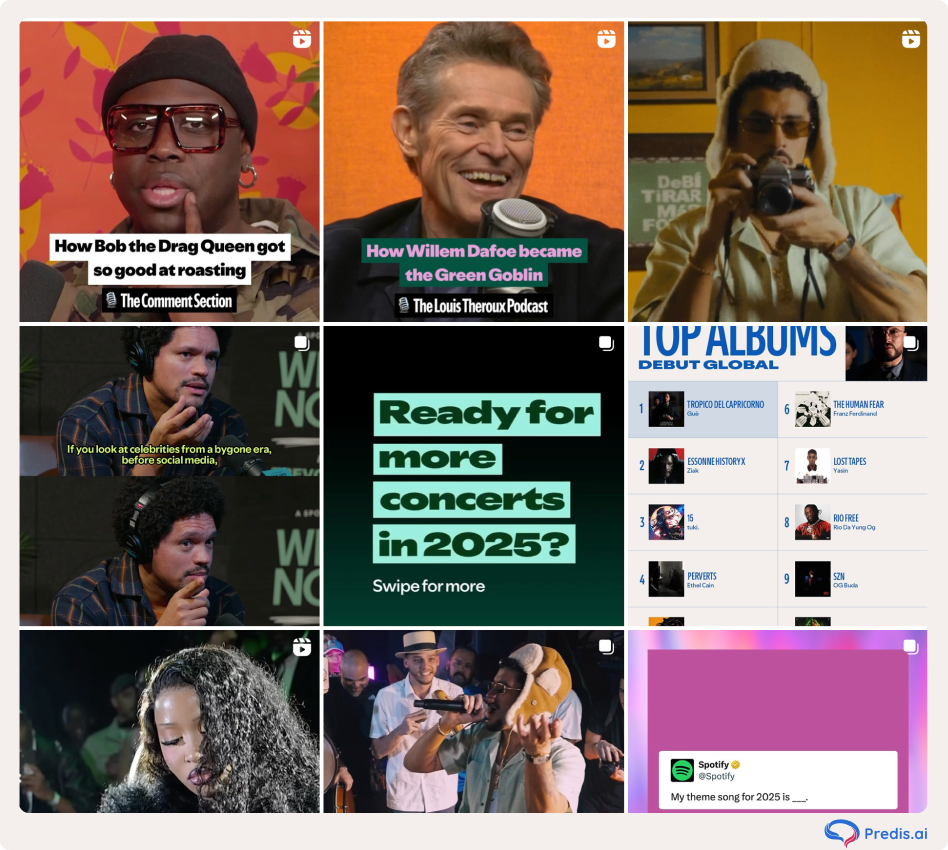
Conclusion
A strong social media brand requires constant adaptation and consistent, strategic planning as well as ongoing development. By developing a unique brand identity, interacting with your audience, and using data-driven insights, you might create a strong presence that increases brand awareness and stimulates corporate development. These strategies will enable you to be quite visible. To create close relationships with your audience, you should always be improving your strategy, keep current on corporate developments, and give important interactions the most priority.
















